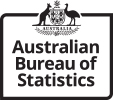Review of the ASGS for 2021
Feedback updated 30 Sep 2020
We asked
In preparation for the 2021 edition of the Australian Statistical Geography Standard (ASGS) the ABS has been consulting with stakeholders to ensure this framework is still meeting user needs. Between May and July 2019, we invited all stakeholders to contribute their views and provide feedback on the ASGS.
You said
A total of 75 submissions were received with major representations from Commonwealth Government Departments (22%), State Government Departments (18%) and Businesses (18%).
A summary of feedback is presented below:
Urban Centres and Localities
- 67% of respondents were positive about using Mesh Blocks as the building blocks of Urban Centres and Localities. They noted that urban areas would be more accurately defined using Mesh Blocks, especially on the fringe of urban centres. 5% of respondents were negative about the proposed changes, with the main concerns being: less data available at the Mesh Block level and less stability over time.
- Regarding allowing non-contiguous Urban Centres, 37% of respondents did not foresee any issues, noting that it would provide a more accurate definition of urban and rural areas. However, 19% of respondents did raise issues such as; difficulties in spatial analysis, difficulties in mapping Urban Centres, and non-contiguous Urban Centres crossing other boundaries (such as Local Government Areas).
- 76% of submissions supported the inclusion of a Rural Residential category, with no oppositions to the inclusion. Respondents commented on the increasing need for a definition of this type of settlement to enable consistent statistical analysis.
- The density criteria proposed for identifying Rural Residential Mesh Blocks received a wide range of responses. 47% or respondents supported the proposed criteria and 5% did not. Supportive respondents agreed that the proposed density criteria of >25 psns per sqkm would accurately reflect areas of rural residential character. However, there was concern from other respondents that this density threshold would be too low and capture some rural areas as a result.
Commonwealth and State Electoral Divisions
63% of respondents were positive and 5% were negative about building CEDs and SEDs from Mesh Blocks rather than SA1s. Respondents who were positive said that this change will result in more accurate electoral boundary approximations and allow for more precise data analysis. However, there was also concern around having less data available at the Mesh Block level.
Environmental Boundaries
65% of respondents said that they do not use Natural Resource Management Regions (NRMRs) and Australian Drainage Divisions, and only 9% of respondents find them to be useful.
A number of other environmental boundaries were suggested for inclusion in the ASGS, these included:
- Flood maps
- Water and sewerage distribution areas
- Climate classifications
- Weather districts
Coding Structure
On the removal of short codes for SA1s and SA2s, 43% were positive and 12% were negative. Many see the use of two different codes confusing, and consider that long codes are preferable as they are clear and hierarchical. The main reasons why respondents were not supportive of this change were that; short codes are easier to display, they are easier to reference, and it is difficult to change systems that have already integrated short codes.
Improving the ASGS and Design Principles
Overall, respondents were supportive of the ASGS design principles and thought they were comprehensive. Coherence was commonly recognised as being the most important principle, especially as it contributes to stability and consistency across the statistical boundaries. Consistency around growth areas was identified as an issue, along with ASGS boundaries needing to be consistently named across ABS products. Additionally, several comments were made in relation to the Interpretability principle, particularly that more effort should be placed on the alignment of boundaries to significant and stable boundaries.
A total of 49 specific boundary change requests were received, ranging from SA4 down to SA1 level. Each of these detailed boundary suggestions will be considered in 2021 design.
We did
The ABS has analysed these submissions in detail and incorporated the input into our decision making process for design of ASGS Edition 3. An information paper outlining the broad changes to the ASGS as a result of this consultation and routine review was published in September 2020.
ASGS Edition 3 will be published from mid-2021. Please see the ABS Geography homepage for further details and updates.
Overview
The Australian Bureau of Statistics (ABS) is in the process of reviewing the Australian Statistical Geography Standard (ASGS) in preparation for the 2021 edition. The ASGS provides a framework of statistical areas designed for the dissemination, visualisation and analysis of a broad range of social, demographic and economic statistics.
Why your views matter
It has been ten years since the first edition of the ASGS was released, and the ASGS has generally been very well received. In the lead up to the third edition of the classification, ABS has undertaken a review of the classification that has evaluated existing feedback and has identified changes that seek to maintain its relevance to meet user needs. As part of this review, we are seeking your feedback in regard to several specific areas of the ASGS, including:
- Urban Centres and Localities,
- ASGS State and Commonwealth Electoral Divisions,
- ASGS Natural Resource Management Regions and Australian Drainage Divisions, and
- ASGS coding structure.
We are also seeking any specific design feedback regarding ASGS boundaries.
What happens next
The consultation period has now closed. All submissions are currently being considered as part of the continual improvement of the ASGS. When this process is complete an information paper outlining broad changes to the 2021 edition of the ASGS will be released.
Audiences
- Stakeholders
- Data Users
Interests
- Customer Feedback

Share
Share on Twitter Share on Facebook